当前位置:网站首页>Cesium load vector data
Cesium load vector data
2022-07-07 09:11:00 【FOR. GET】
Vector data introduction
stay GIS in , For the classification of data formats , We generally divide it into two types: raster data and vector data . raster data ( Image data ) It is to regard space as discrete pixels , Expressed by two-dimensional array or other data organization . Vector data is just the opposite , It regards space as continuous , Use elements ( spot 、 Line 、 Noodles ) To express . stay GIS The most familiar vector data in application is Shpfile, More about vector data viewing .
Cesium Vector data formats that can be directly supported include :geojson、topojson、kml And with time characteristics czml
Online tool recommendation
- JSON Online parsing and formatting :https://www.json.cn/
- Online generation GeoJSON:http://geojson.io/
- shp Data transfer GeoJSON and TopoJSON:http://mapshaper.org/
- GeoJson and TopopJson Online conversion :http://jeffpaine.github.io/geojson-topojson/
One 、 load GeoJSON & TopoJSON
【 The official sample 】GeoJSON & TopoJSON
1.1 GeoJSON & TopoJSON brief introduction
- GeoJSON & TopoJSON Format comparison , The biggest difference is TopoJSON Merge two connected edges into one , Greatly reduce the data storage space .
GeoJSONFormat : My understanding is thatPythonComplex dictionary ,【 The address of the screenshot 】 To view the . Form the following :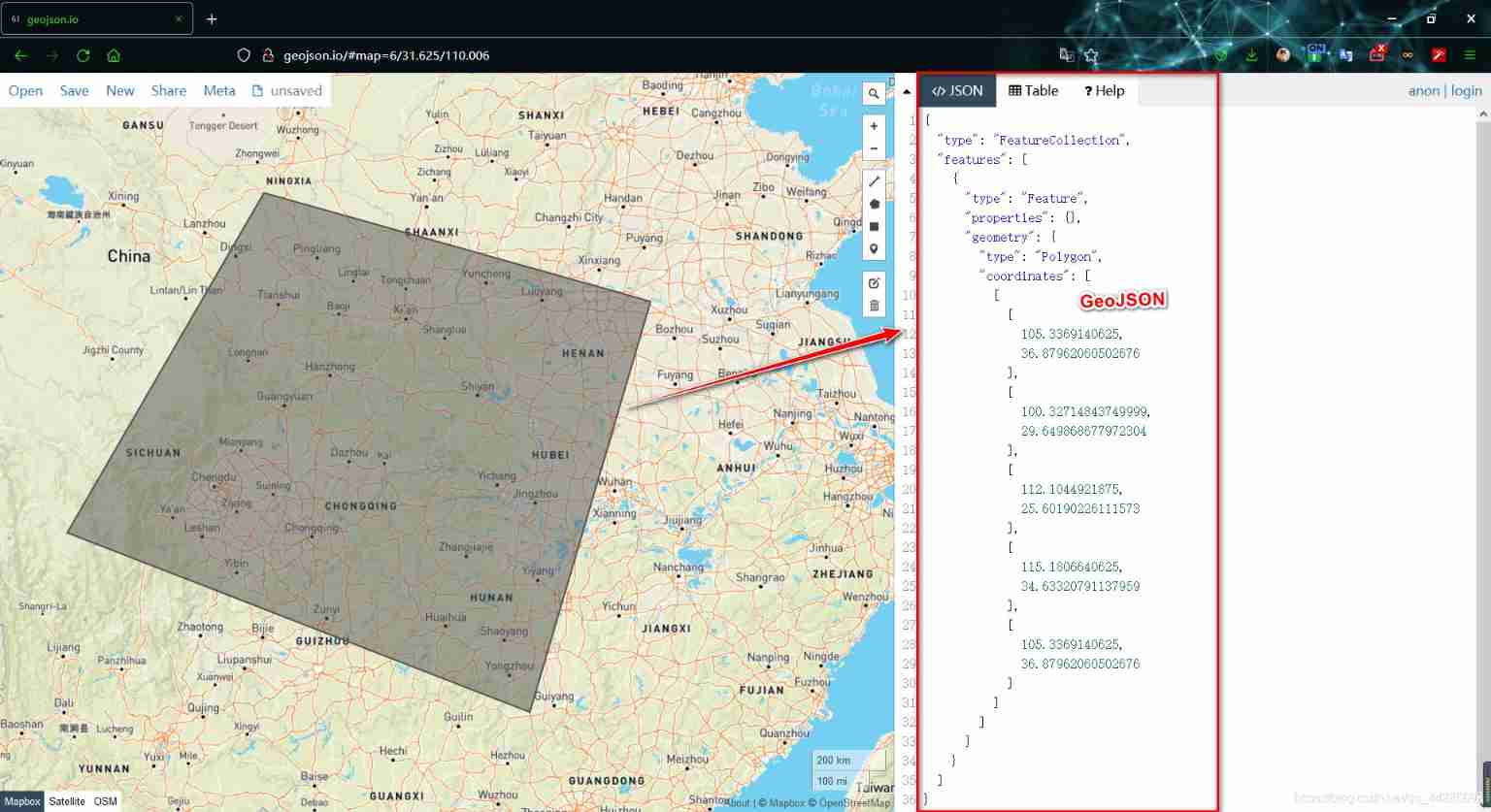
Local
shpFiles are exported on this website , But not recommended ( Data security issues ). You can also useCesiumLaboratory to carry out data conversion ,ArcMapIt's OK , It is best toArcMapturn , The safest .Remember to turn shp Change the coordinate system to wgs-84 Oh ! Or Mercator
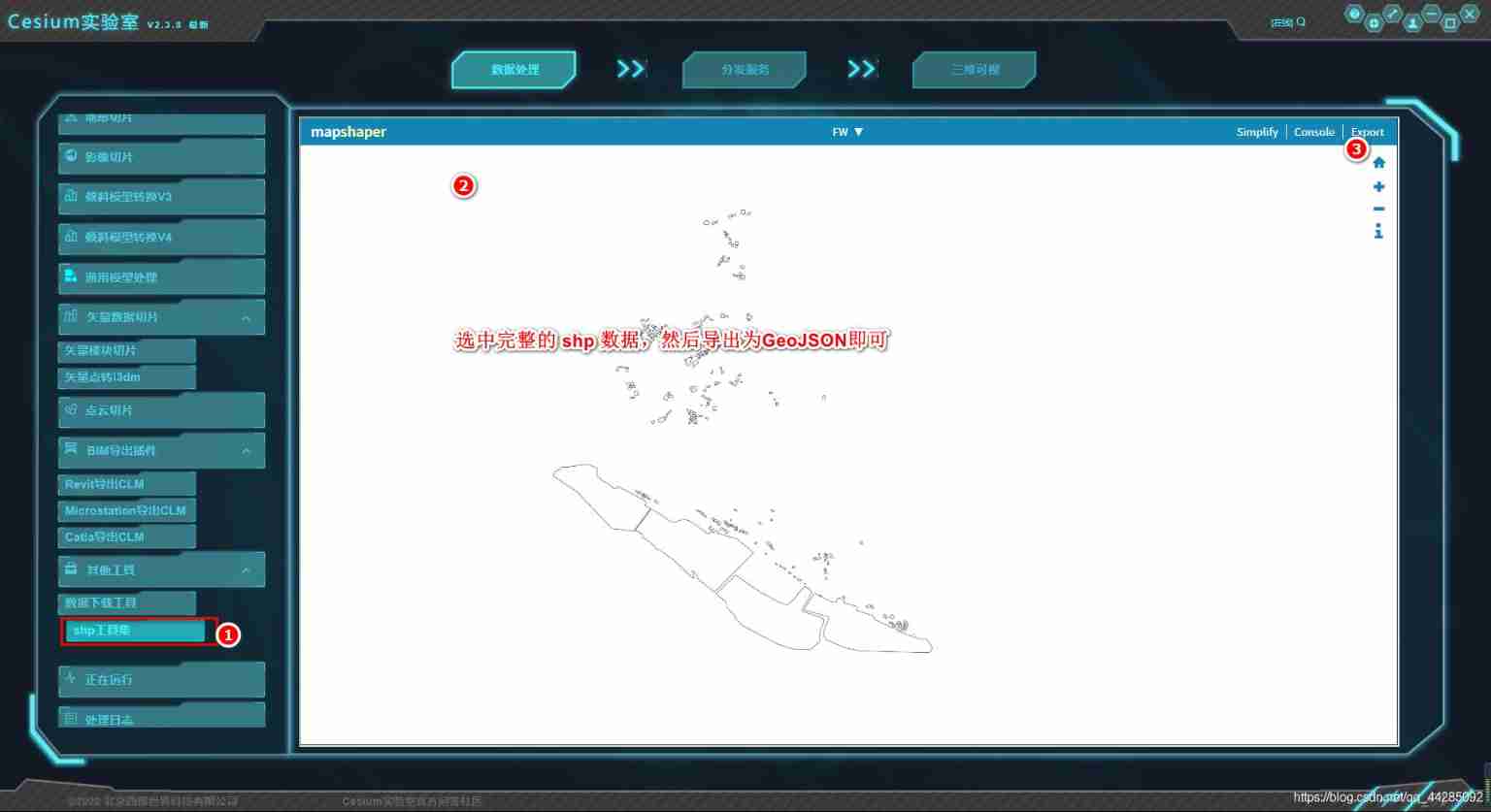
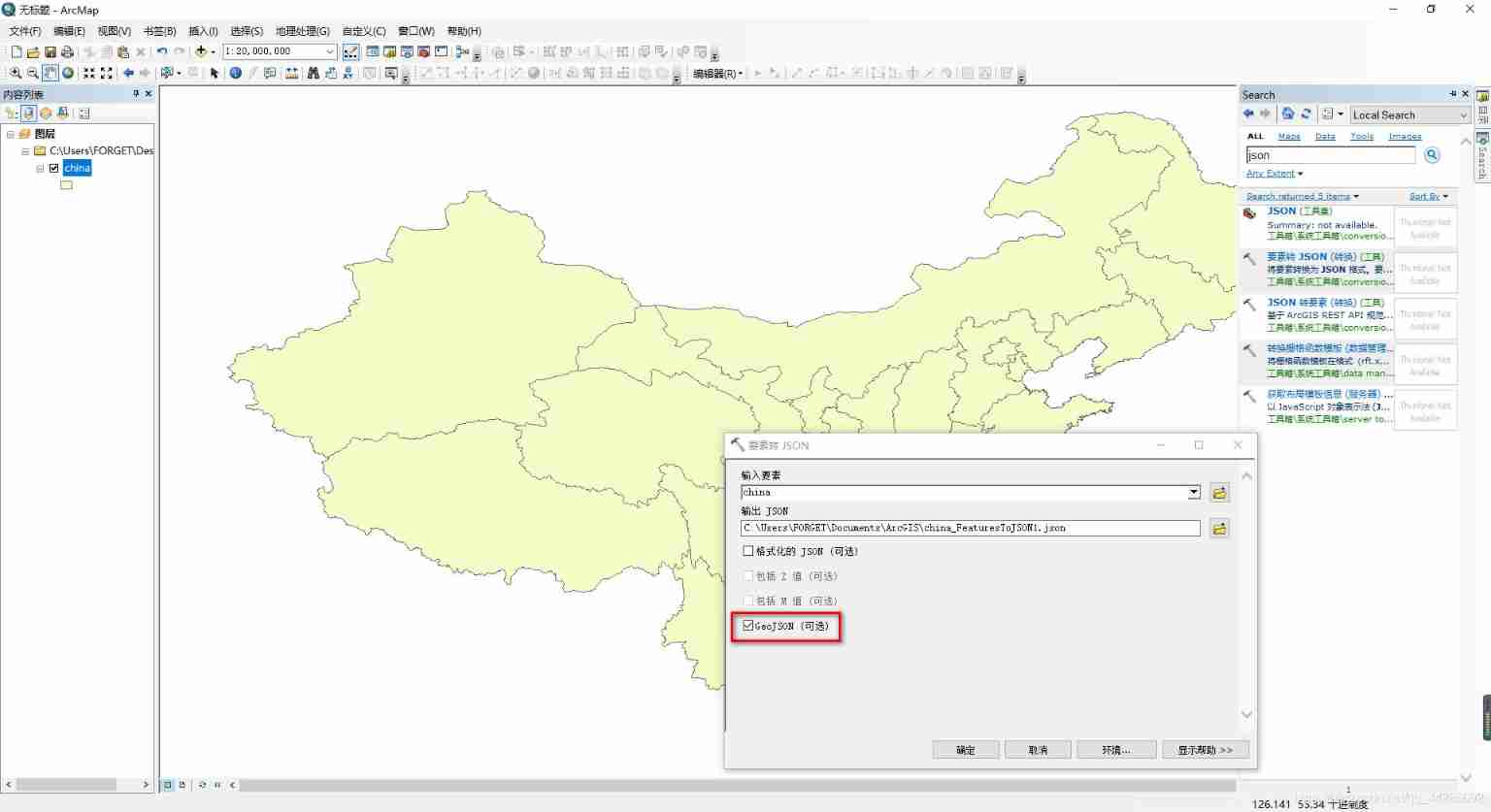
1.2 load GeoJSON & TopoJSON
【 Official loading GeoJSON file 】GeoJSON
The following code is through
DjangoFramework to achieve , Combined with official examples
- GeoJSON
<script>
var viewer = new Cesium.Viewer('cesiumContainer');
viewer.dataSources.add(Cesium.GeoJsonDataSource.load('{% static "GIS/json/china.json" %}', {
stroke: Cesium.Color.HOTPINK,
fill: Cesium.Color.PINK.withAlpha(0.5),
strokeWidth: 3
}));
</script>

- TopoJSON
var dataSource = viewer.dataSources.add(
Cesium.GeoJsonDataSource.load("/static/data/ne_10m_us_states.topojson")
);
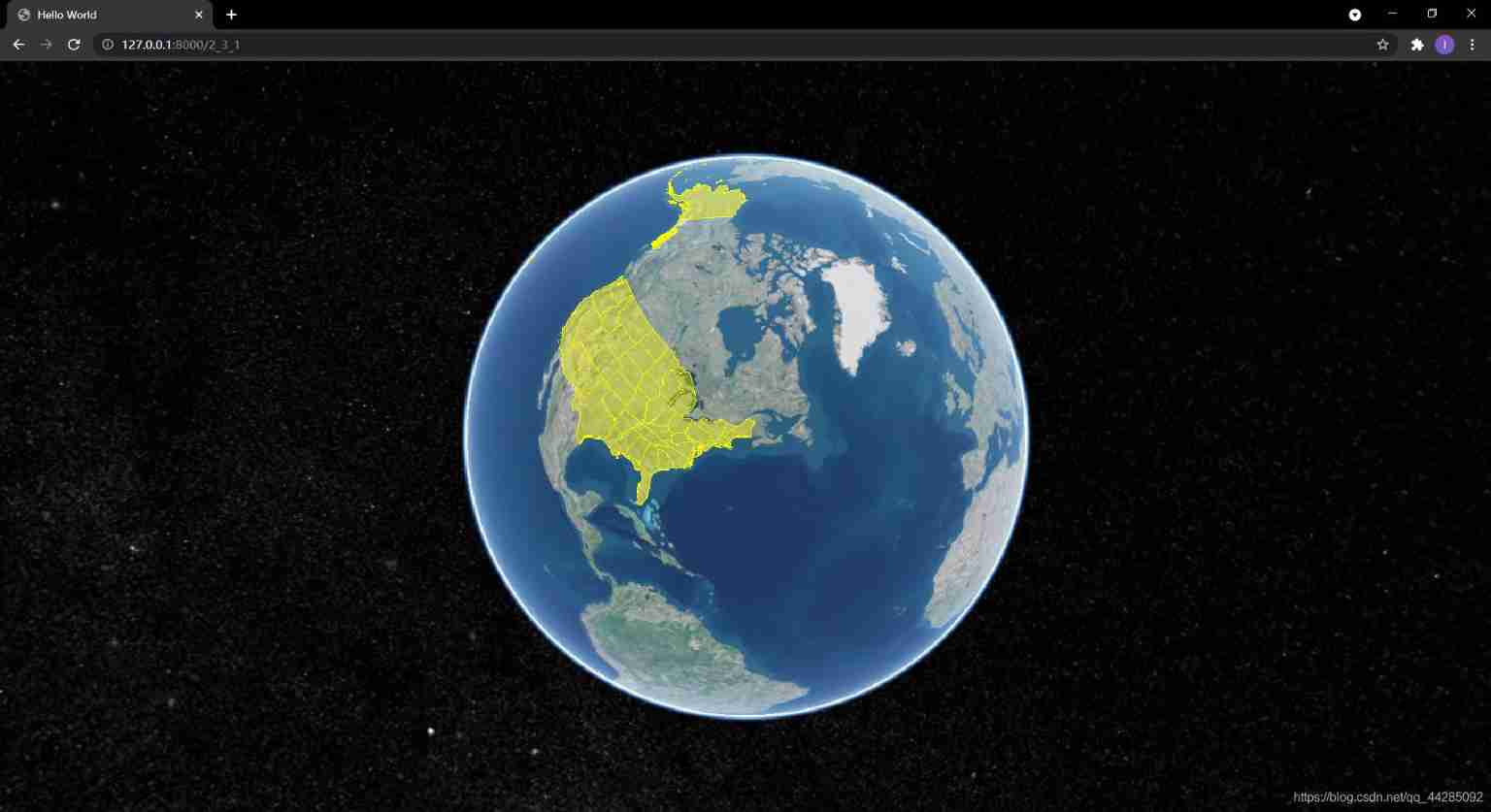
Two 、 load KML
KML (keyhole markup language)It's based onXMLSyntax format file , Used to describe and store geographic information data ( spot 、 Line 、 Noodles 、 polygon 、 Polyhedron and model, etc ), Usually applied toXMLThe biggest difference between files is KML It describes geographic information data , meanwhileKMLHas been officiallyOGCuse , BecomeOGCOne of many specifications .KMLThe file has two file extensions :.KMLand.KMZ( One or moreKMLCompressed set of files , usezipFormat compression )
var options = {
camera: viewer.scene.camera,
canvas: viewer.scene.canvas,
};
var dataSource = Cesium.KmlDataSource.load(
"/static/data/kml/gdpPerCapita2008.kmz",
options
);
viewer.dataSources.add(dataSource);
viewer.camera.flyHome(0);
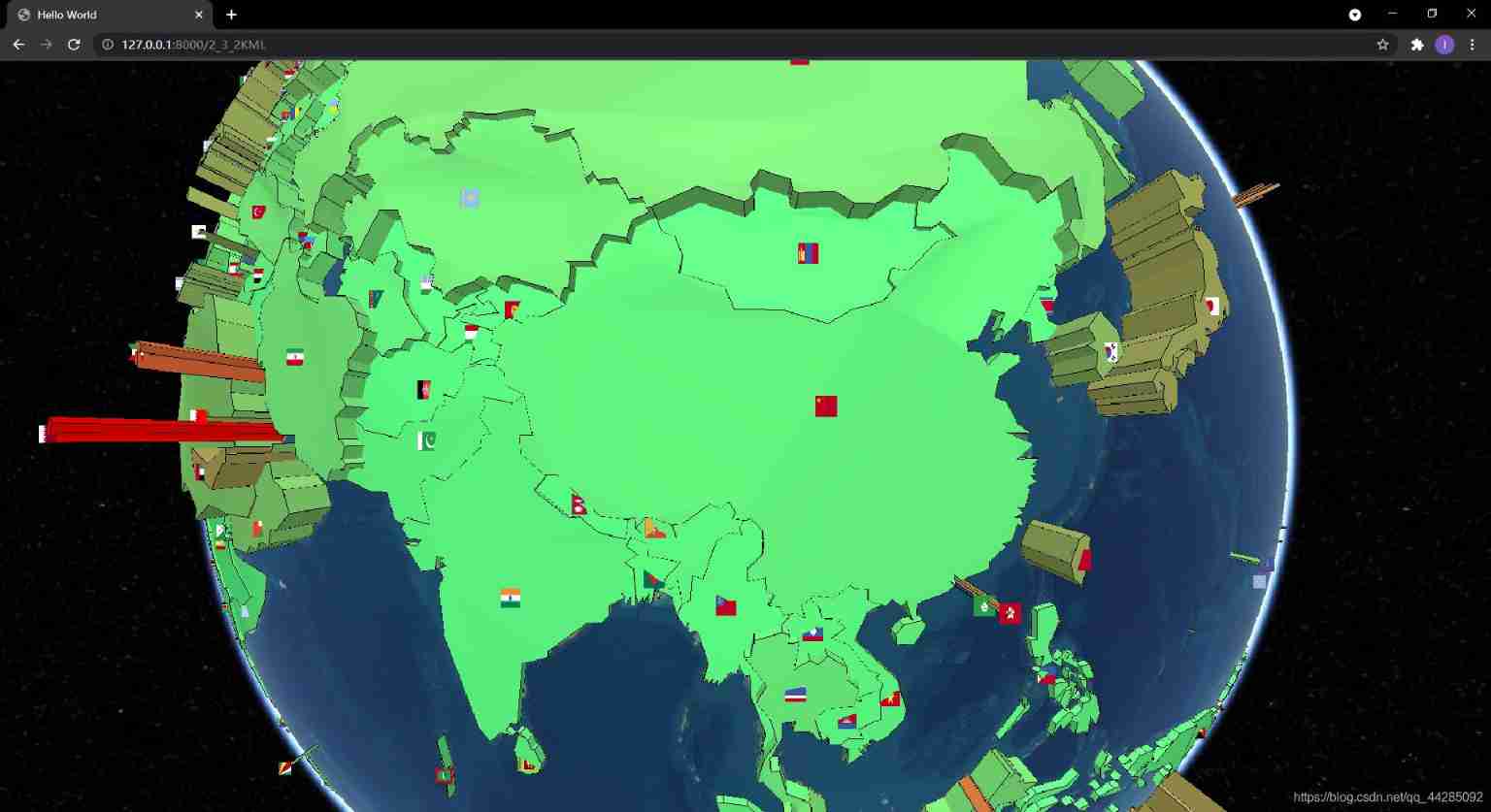
3、 ... and 、 load CZML
CZMLIt's a kind ofJSONFormat string , Used to describe time-related animation scenes ,CZMLInclude a point 、 Line 、 landmark 、 Models and other graphical elements , It also shows how these elements change over time .Cesium Have a set of rich clientsAPI, adoptCZMLAdopt a data-driven approach , Without writing code, I can use generalCesium viewerBuild rich scenes . More about CZML Check out the links
var dataSource = Cesium.CzmlDataSource.load("/static/data/Vehicle.czml");

边栏推荐
- Interview question: general layout and wiring principles of high-speed PCB
- Ppt template and material download website (pure dry goods, recommended Collection)
- 端口复用和重映像
- Skill review of test engineer before interview
- 【Istio Network CRD VirtualService、Envoyfilter】
- STM32 clock system
- Simulation volume leetcode [general] 1557 The minimum number of points that can reach all points
- Expérience de port série - simple réception et réception de données
- 面试题:高速PCB一般布局、布线原则
- UnityShader入门精要个人总结--基础篇(一)
猜你喜欢
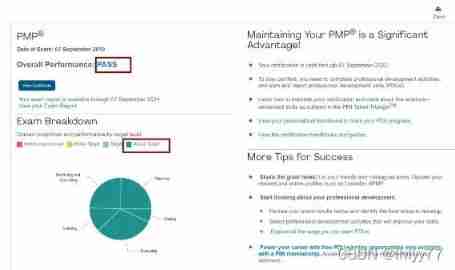
Do you have any certificates with high gold content?

The longest ascending subsequence model acwing 1017 Strange thief Kidd's glider
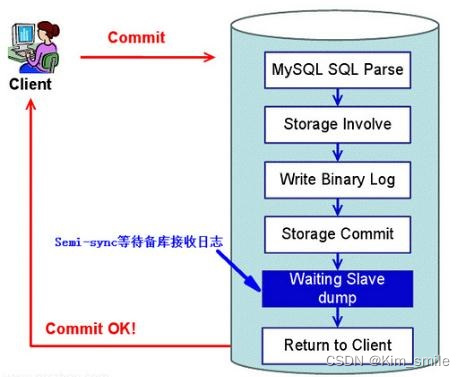
MySQL主从延迟的解决方案

Platformization, a fulcrum of strong chain complementing chain

STM32 clock system
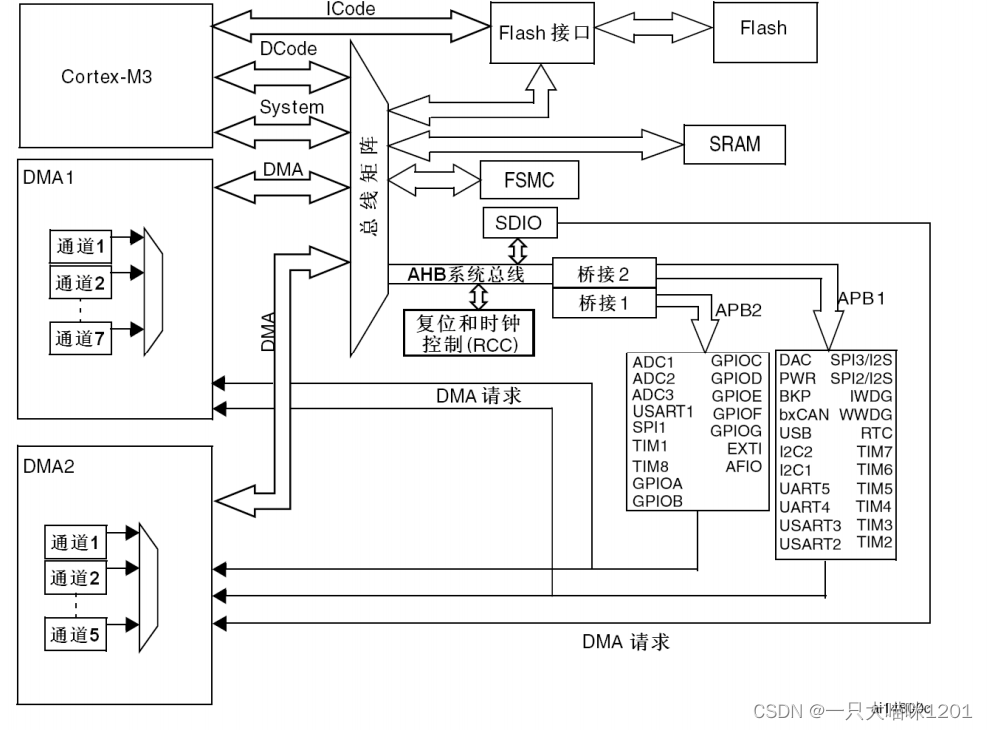
Register address name mapping
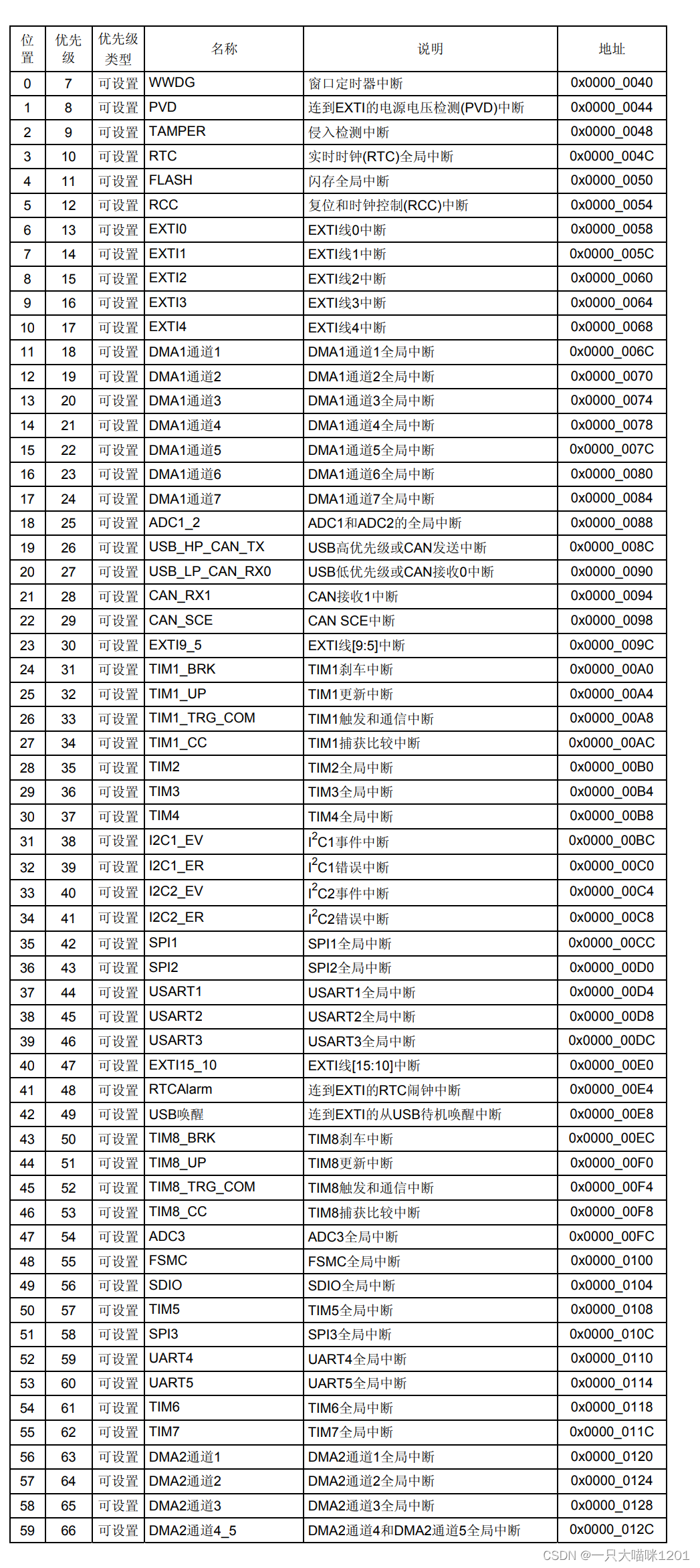
NVIC中断优先级管理
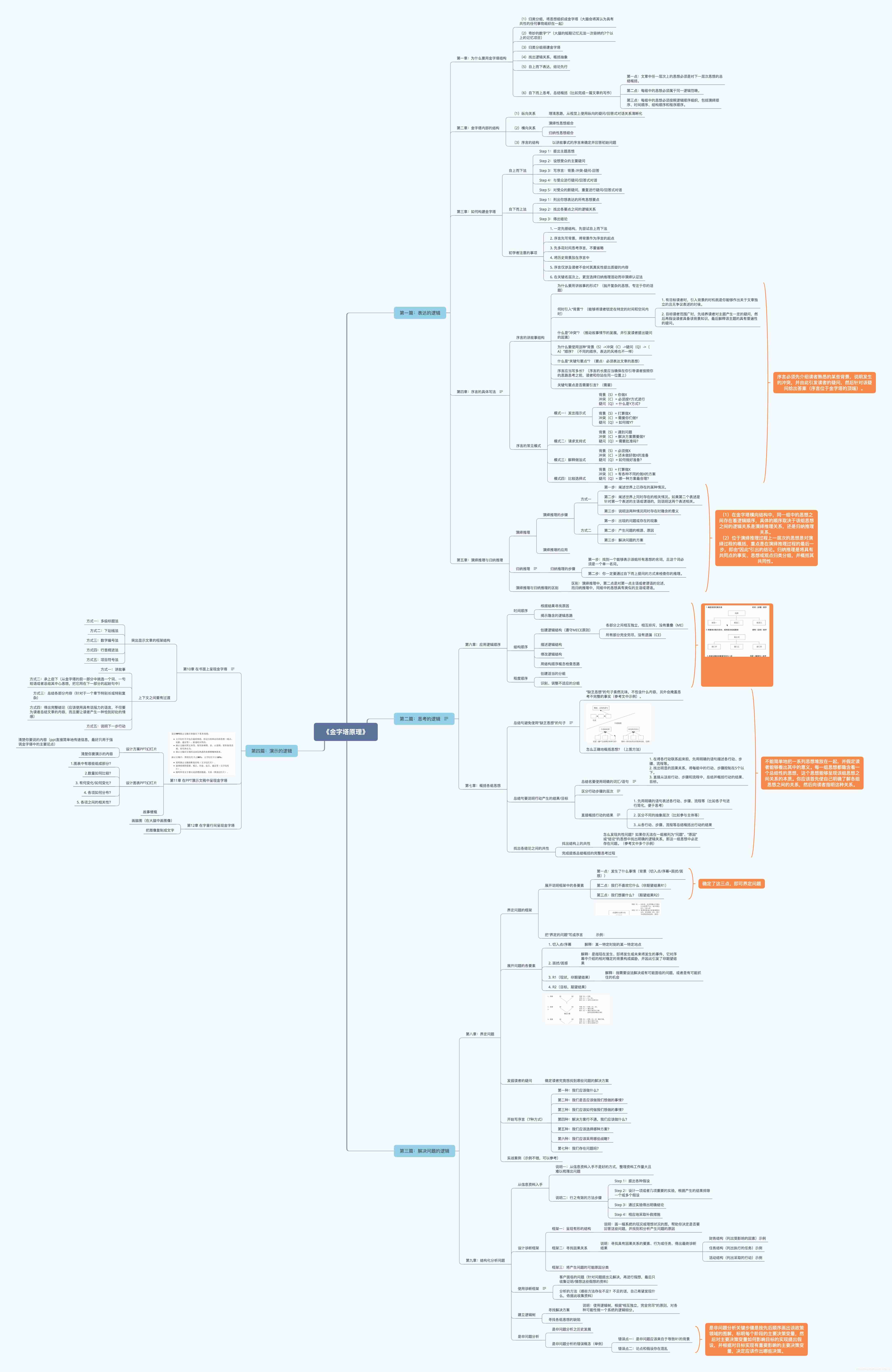
Reading notes of pyramid principle
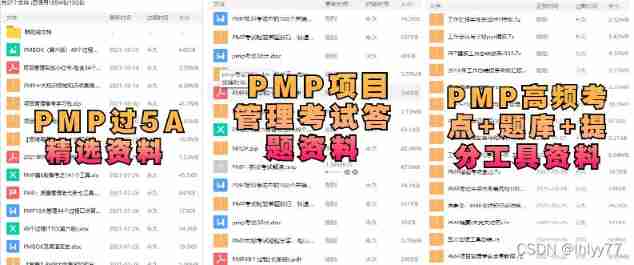
Summary of PMP learning materials
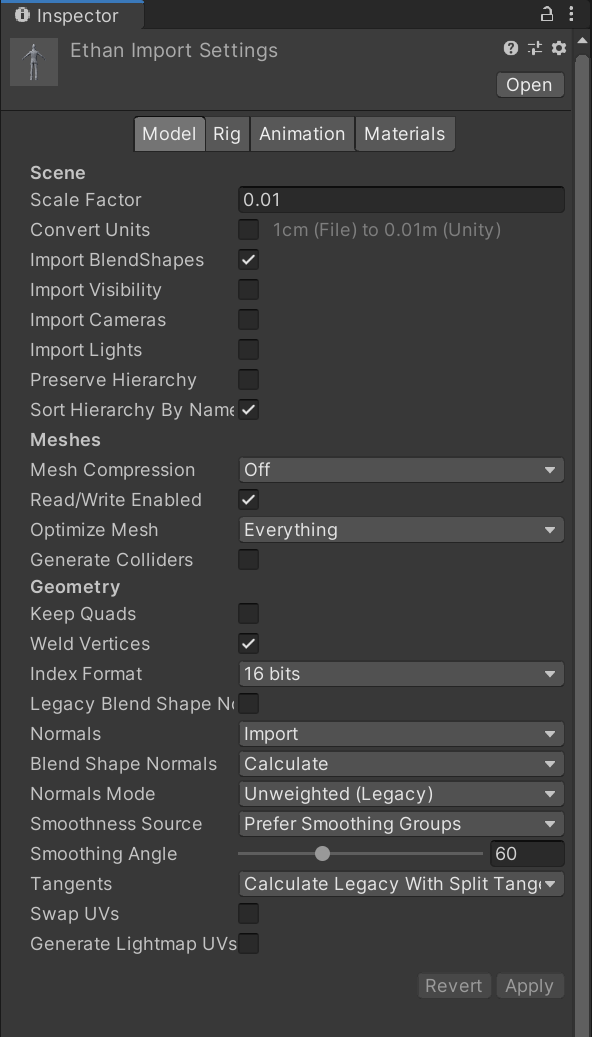
2022-06-30 unity core 8 - model import
随机推荐
Un salaire annuel de 50 W Ali P8 vous montrera comment passer du test
Skills that testers must know: Selenium's three waiting ways are interpreted clearly
2021 year end summary
模拟卷Leetcode【普通】1705. 吃苹果的最大数目
LeetCode 736. LISP syntax parsing
systemd
硬核分享:硬件工程师常用工具包
个人力扣题目分类记录
2022-06-30 unity core 8 - model import
Full link voltage test of the e-commerce campaign Guide
LED模拟与数字调光
如何统计项目代码行数
The longest ascending subsequence model acwing 1017 Strange thief Kidd's glider
Count the number of words C language
Esp32-ulp coprocessor low power mode RTC GPIO interrupt wake up
Led analog and digital dimming
C语言指针(特别篇)
What is the rating of Huishang futures company? Is it safe to open an account? I want to open an account, OK?
H3C vxlan configuration
MySql数据库-事务-学习笔记